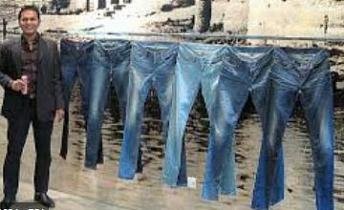How Denim Jeans Could Be Polluting Our Water
A trusted pair of jeans is to many people the ultimate go-to clothing item. Whether the requirement is to dress up or down, given the right accessory or t-shirt, there simply isn’t anything quite like it.
Which is why most people wouldn’t even give a possible connection between their favourite item of clothing and water pollution even as much as a second thought. And also why it’s so surprising to learn that researchers at the University of Toronto have now discovered that there appears to be a definite connection between the microfibres typically shed by blue jeans and the water-polluting fibres found in several of Canada’s natural water bodies – both big as well as smaller in size.
Further Investigation Is Needed
Toronto University researchers recently published a paper confirming that microfibres detected in the country’s Great Lakes, some smaller suburban lakes near Toronto, and even lakes spanning all the way up to the Arctic Archipelago, are indeed blue jeans microfibres.
According to Sam Athey, who is a co-author of the Toronto University paper, researchers have for some time now been aware of the presence of plastic microfibres shed by synthetic clothing in Canadian lakes and other aquatic sources. This is however the first time, explained Athey, that “natural†fibres too, have been found to be present and contributory to the country’s potentially devastating water pollution problem. And as such, said Athey, further investigation into the presence of the so-called natural fibres may be needed to as to understand the impact of said microfibres on the country’s marine life.
Time Is An Unavailable Luxury
But time for further investigation may be a luxury the world of science and microbiology simply does not have at its disposal at this point in time, says earth sciences professor Miriam Diamond. Since the presence of blue jeans microfibres have been detected in waters very far away from any blue jeans-wearing populations, Diamond says she fears the spread of the problem to be already of a global concern.
We do not have the luxury of “waiting and seeing†and further investigating the possible impacts of microfibres on the Arctic, says Diamond. We do however know that we should not continue pollution the Arctic in the way that we have been doing up until now.
And according to Athey, since denim microfibres have been detected in the discharge from wastewater rehabilitation plants discharging water into Lake Ontario, it is more than possible that those microfibres would have originated from local washing machines.
Comments
There are 0 comments on this post








